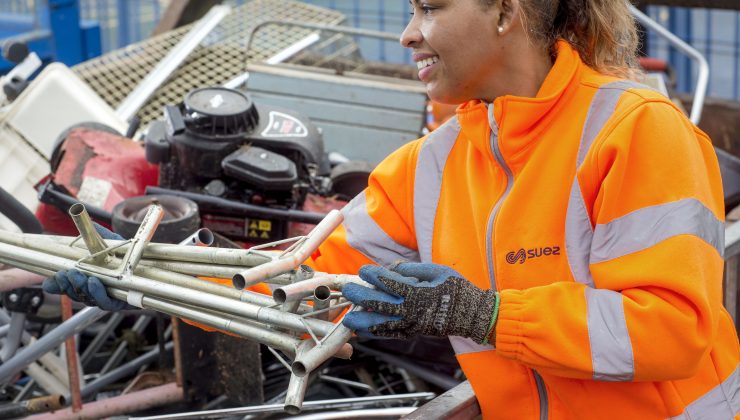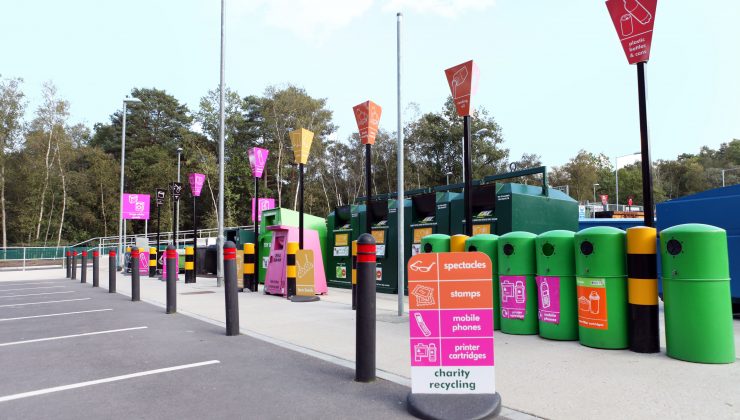
The gases from the anaerobic digestion and gasification process go through a multi-stage cleaning process before they are released into the atmosphere through a 49 metre-high stack (chimney). Emissions from the stack are mostly steam with oxygen, nitrogen, carbon dioxide and tiny amounts of pollutants. These are well within the strict levels set by the Environment Agency (EA) in the facility’s environmental permit. Monitors at the base of the chimney continuously record emission levels and this data is constantly available to our regulators. Recent emissions monitoring data is available here.
How are emissions monitored?
Within the Eco Park, emissions are monitored directly by the Continuous Emissions Monitoring System (CEMS). This system is fitted inside the stack to monitor the flue gas directly before it is released into the atmosphere. The CEMS equipment is a dual system, with two sets of equipment monitoring constantly so there is always a back-up in case one of the systems is offline or requires maintenance. The information from the CEMS is available to the EA constantly. The latest data is available here.
In addition to providing information to the EA for regulatory compliance, the CEMS also allows our operations team to monitor the processes. The data provided by the monitoring systems gives useful feedback on how the processes are operating, allowing the team to manage the facility safely and efficiently.
What are your emission limits?
| 30-minute average limit | Daily average limit | |
| Particulate matter | 30 mg/M3 | 5 mg/M3 |
| Total organic carbon | 20 mg/M3 | 10 mg/M3 |
| Hydrogen chloride | 60 mg/M3 | 8 mg/M3 |
| Sulphur dioxide | 200 mg/M3 | 40 mg/M3 |
| Oxides of nitrogen (NOX) | 400 mg/M3 | 100 mg/M3 |
| Ammonia (NH3) | – | 15 mg/M3 |
| 10-minute average limit | Daily average limit | |
| Carbon monoxide (CO) | 150 mg/M3 | 50 mg/M3 |
What are the emissions and how are they managed?
Oxides of nitrogen
Oxides of nitrogen, which includes both nitrogen dioxide and nitrogen monoxide, and are known as NOx, are formed whenever any substance is combusted in air. This is because the air we breathe contains both nitrogen (78%) and oxygen (21%), which combine during combustion. Levels of NOx can be managed by ensuring the correct temperature and oxygen levels in the gasification process. After the gasification process, urea is added to chemically change the NOx to nitrogen, oxygen and water.
Carbon monoxide
Carbon Monoxide, or CO, is produced when waste does not break down sufficiently. To help reduce levels of CO, the pre-treatment process sorts and shreds the waste into refuse derived fuel (RDF) so that it will break down completely in the sand bed. The temperature in the sand bed, as well as oxygen levels, are monitored constantly to maintain correct levels of CO.
Acidic gases
Many of the things we throw away, including plastics, contain sulphur or chlorine. When these are broken down at temperature, they release sulphur dioxide and hydrogen chloride, known as acidic gases. Within the gasification process, levels of acidic gases are constantly monitored and lime, which is alkaline, is added at various stages to neutralise them.
Particulates
Particulates, including micro particulates known as PM2.5 (less than μm) and PM10 (less than 10μm), are captured towards the end of the gasification process using bag house filters.


